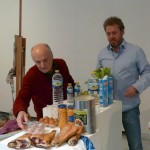 Hands crossed behind his back, the slight and nimble figure of Antonio López moves between easels and the smell of turpentine. He displays an enviable energy and normally interrupts his wanderings among the painters only in order to have lunch and a little rest at midday. Some twenty to twenty-five artists toil away opposite still-life subjects or a model.
Hands crossed behind his back, the slight and nimble figure of Antonio López moves between easels and the smell of turpentine. He displays an enviable energy and normally interrupts his wanderings among the painters only in order to have lunch and a little rest at midday. Some twenty to twenty-five artists toil away opposite still-life subjects or a model.
Alongside his tireless studio work, Antonio López has for some time now dedicated a part of his activities to teaching other artists. Three or four times a year he facilitates workshops in which painters of all ages, classes and backgrounds hope to be accepted in order to share a week together with the master.
For those of us who greatly admire his work, the initial meeting with the master is a thrilling experience. Almost immediately, his approachable nature and easy manner come to the fore, and you soon find yourself talking to him about painting as if you were life-long friends.
In the workshop, the voices of some of the students who are crowded round Antonio López can be heard, and from time to time his faltering but infectious laughter can also be made out. All of a sudden, he is at your side, looking at you with intelligence and curiosity. First he observes you, then your work:
– How’s it going? How are you getting on?
You don’t know very well what to say. You look at your painting and stammer…
– Well, I don’t know. As you can see.
He is considerate and avoids making dismissive or wounding comments because he has high regard for other artists and their work. Although he can’t help getting straight to the point if he finds something too disagreeable:
– Paint its real size…that’s too small or too big…move closer.
His comments emphasize expressive and pictorial aspects, or those concerning composition, more than the basic technique that it is assumed the workshop participants already have; just as soldiers are assumed to possess bravery.
I have had the privilege of attending two of his workshops. From the notes I took at the time, I can draws some of the master’s ideas and comments that, if not literal, I believe respect the spirit of his teachings.
Life or photography
This is the first point that López the master instils in his students. The reality of the objects set before an artist provides his or her work with intensity and truthfulness. To use photography is to place a filter in front of the subject, an initial interpretation obtained from the camera and one that stands between painters and their perception of nature. Sometimes there is no option but to use photography, as Antonio López himself had to do with his painting of the King and Queen. Artists who are accustomed to life painting can use photography as an aid, but not as a starting point or as a sole reference point for their paintings.
Composition
Antonio López is not a fan of compositions that are complex or, as he says, “tricky” and gimmicky. In line with what he applies to his own painting, he recommends using a symmetrical or centred layout. In life painting you have to position yourself close to the subject in order to get a good view of it (one meter or less away). You should also make a life-size representation of the subject, provided it allows you to do so.
Antonio López, Mediums and Colour Palettes
Essentially, Antonio López is an oil painter, and in his workshops he encourages painters to use this medium. The delicate way in which he applies the paint in those clean, colourful planes, allied to his exceptional use of tonality, with those sublime greys, has encouraged a following among painters from all over the world.
He recommends a limited colour palette; seven or eight colours that may vary depending on the subject. He is in favour of each person looking for their own solution, and for that reason he does not prescribe a unique formula.
From what he told me, he does not normally use drying mediums or any other types of medium. He likes the semi-matt look of natural oil. This is why he applies the colours just as they are when they come out of the tube, or perhaps with a little turpentine.
Exactitude and measurement
 All painters feel the need for exactitude. In Antonio López’s case it involves a search for order, although he admits this in itself is not valuable, except with regard to providing the backbone and basis that give a work solidity and structure. In his paintings he makes very precise measurements using methods that are as simple as they are effective.
All painters feel the need for exactitude. In Antonio López’s case it involves a search for order, although he admits this in itself is not valuable, except with regard to providing the backbone and basis that give a work solidity and structure. In his paintings he makes very precise measurements using methods that are as simple as they are effective.
(If you would like to read more about his painting technique, you can download, in PDF format, the excellent study “The pictorial methodology of Antonio López García” by David Serrano León of the University of Murcia, Spain) http://institucional.us.es/revistas/arte/24/t2_art_17.pdf
On the important aspects of becoming an artist
First, be honest and ask yourself whether you have sufficient talent and enough of a vocation to choose a path that is expected to be tough and demanding. This is the most important decision. Once you have taken it, you have to work tirelessly and be honest with your own artistic proposition. There are no magic formulas for finding your own path; it is a question of time and perseverance.
Almost no one remains untainted with regard to their proposition. Nor can anyone boast of being completely uninfluenced by fashions, or that money, critics, trends or the tastes of a certain audience do not matter to them. However, the less influence these aspects have on an artist’s work, the less superficial and more, personal, moving and long-lasting it will be.
I feel that I have experienced something unique for an artist, and that I have had the unusual privilege of having shared my time with a master. Then there are my fellow workshop participants who are talented, enthusiastic and willing to share, learn and teach. Sharing a week with them was the icing on the cake.
After looking at the progress I had made on the first day of my first workshop, I remember that Antonio López said to me:
– It’s good, it’s very good. I would leave it alone now…
– I would leave it alone now – he repeated
I didn’t pay any attention to the master – I wanted to progress further. In his next review he was tactful and kind enough not to put me down with an “I told you so”.
Resources:
Books
Antonio López García: Paintings and Sculpture
If you liked The Art Digger Share it!
thank you!

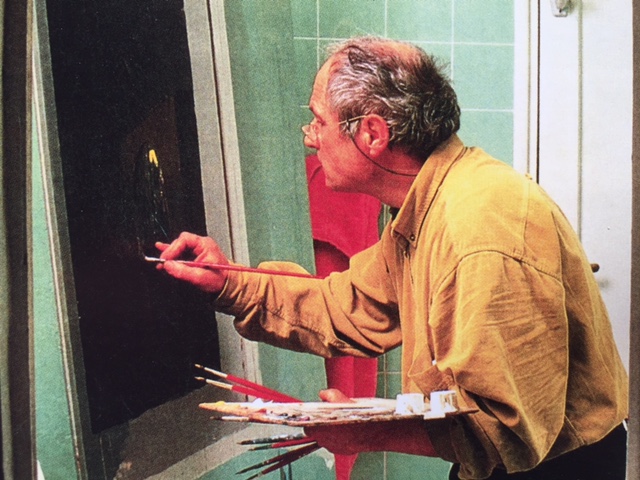
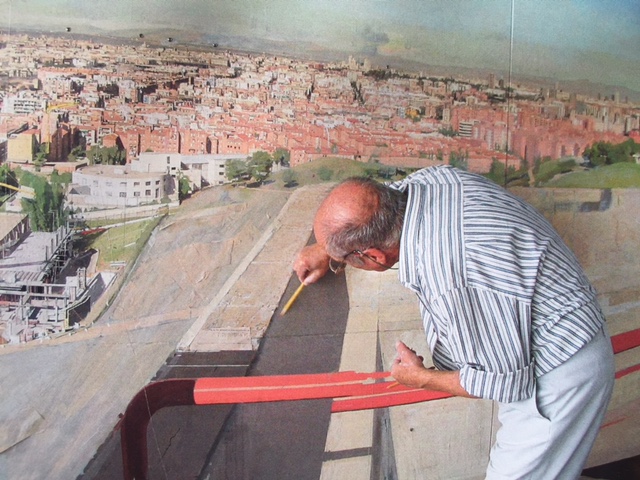
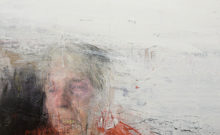
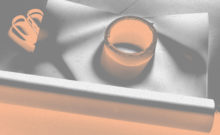
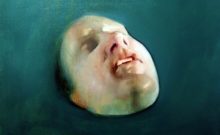
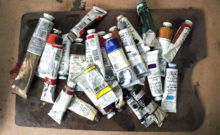
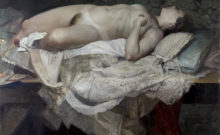
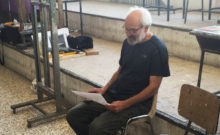
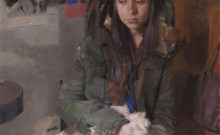
Marian De La Torre Easthope
April 27, 2015 8:07 pmMe gustaría recibir notificaciones de nuevas entradas al blog.
Angel Alvarez de Benito
April 27, 2015 9:12 pmHola Marian: puedes rellenar la solicitud de newsletter y así también te llegará por email. Gracias por tus amables comentario
Arthur Robinson
December 3, 2015 7:21 amLove your article on Euan Uglow he is one of my favorite artist. I consider him a true master. You have a wonderful layout and design for this blog keep up the good work with these interesting topics.
Regards
Arthur Robinson
Angel Alvarez de Benito
December 3, 2015 2:04 pmThanks for your comment Arthur!